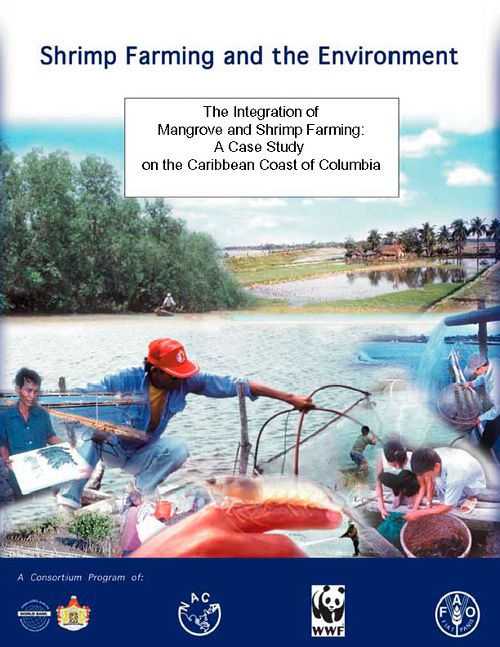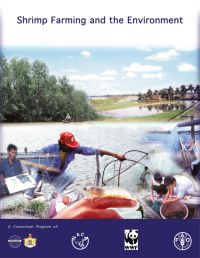The integration of mangrove and shrimp farming: A case study on the Caribbean coast of Colombia
31 May 2005 | Dominique Gautier | 1365 Downloads | .pdf | 1.31 MB | Better management practices, Livelihoods, gender and social issues, Aquatic plants, Shrimp, Environment and Sustainability
Shrimp aquaculture has been accused of threatening mangrove forests worldwide. In response, the shrimp industry is developing the concept of integrated mangrove–shrimp farm systems. Mangrove and shrimp ponds are known to have mutually supportive functions. Mangrove wetlands can treat effluents from shrimp ponds effectively by removing suspended solids and nutrients. This activity can be expected, in turn, to enhance mangrove productivity. This report describes an integrated mangrove wetland–shrimp farm operating in Colombia since 1996. At this site, shrimp farm effluent is recirculated through an 120 ha mangrove area. Suspended solids are considerably reduced in the effluent, and nutrient concentrations in the adjacent lagoon decrease. Mangrove growth and regeneration in the biofilter are very high, but nutrient cycling in the biofilter is poorly understood. Moreover, the long-term impact of effluents on mangrove ecosystem has to be assessed. This case provides a positive example of responsible aquaculture development in coastal areas, but at the same time reveals the need for further research to develop sustainable practices within the shrimp industry.
Copyright, all rights reserved.

